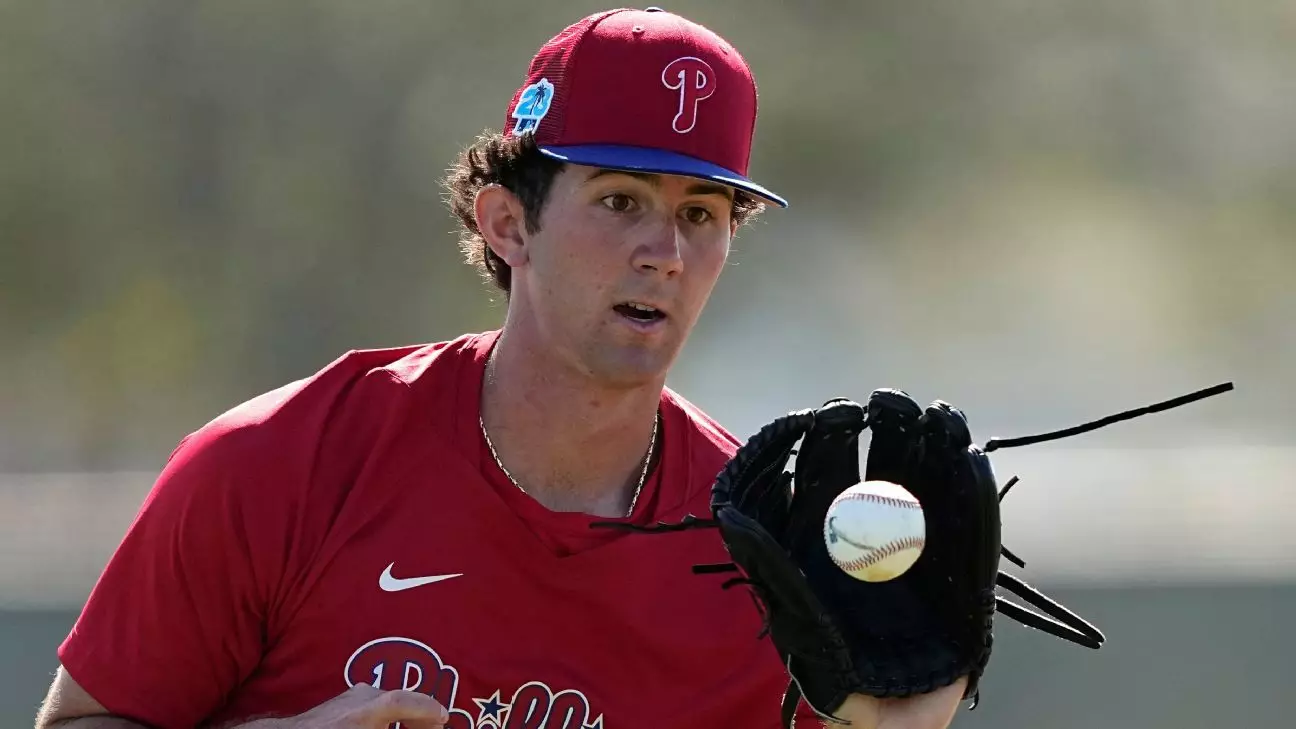In the high-stakes world of professional baseball, where the path from promising prospect to major league star is often precarious, Andrew Painter’s recent recovery from elbow surgery serves as a sobering reminder that talent alone is never enough. Painter, a rising star in the Philadelphia Phillies organization, was initially slated to participate in the prestigious All-Star Futures Game—an opportunity that often acts as a springboard for young players eyeing the major leagues. However, his withdrawal due to his ongoing rehabilitation process reflects both the physical and strategic complexities facing young athletes today.
Elbow injuries, particularly those requiring Tommy John surgery, represent one of the most challenging hurdles for pitchers. While the procedure has become more common and outcomes have improved, the grueling nature of rehabilitation demands not just medical attention but also careful management of playing time and conditioning. Painter’s decision (or the team’s decision) to sideline him for the Futures Game echoes this cautious approach, prioritizing his long-term health over short-term exposure.
A Glimpse into Painter’s Potential
Painter’s trajectory before the injury painted a promising picture. His rapid ascent through the Phillies’ farm system, punctuated by stellar statistics such as a 1.48 ERA across multiple minor league levels in 2022, underscored his potential dominance on the mound. Being the 13th overall pick in the 2021 draft and securing a substantial signing bonus only added fuel to the expectations surrounding him.
These impressive credentials amplify the frustration around his sidelined status but also highlight the wealth of talent the Phillies are nurturing. This situation illuminates a fundamental truth in player development: even the most gifted prospects must face setbacks, and often, the true measure of success is not unbroken progress but resilience and adaptation.
The Phillies’ Pragmatic Approach
Manager Rob Thomson’s candid remarks encapsulate a prudent philosophy toward Painter’s timeline. The absence of any guarantee for Painter’s imminent major league debut reinforces a realistic, no-rush mentality. The team’s patience signals a shift from viewing prospects merely as assets to speed through the system toward a more holistic and sustainable developmental approach.
This long view is essential. It speaks to the organizational wisdom that rushing a pitcher recovering from significant surgery can jeopardize future performance and career longevity. The Phillies’ careful handling of Painter exemplifies best practices in athlete management in modern baseball, where medical science and performance analytics increasingly guide decisions.
Beyond the Futures Game: What Truly Defines a Prospect
While the All-Star Futures Game is a valuable platform, it’s important to recognize its limitations as a predictor of career success. Historically, a strong majority of participants eventually make it to the major leagues, yet the journey is rarely linear or predictable. Painter’s path reminds us that recovery periods, setbacks, and cautious pacing are integral chapters in many athletes’ stories.
In the end, Painter’s situation highlights a broader message for baseball fans and officials alike: true player development demands more than showcasing potential—it requires fostering durability, mental fortitude, and the willingness to recalibrate expectations without losing sight of the ultimate goal: a healthy, productive major league career. The Phillies seem keenly aware of this balance, and in that regard, their approach to Andrew Painter’s recovery is both commendable and necessary.

